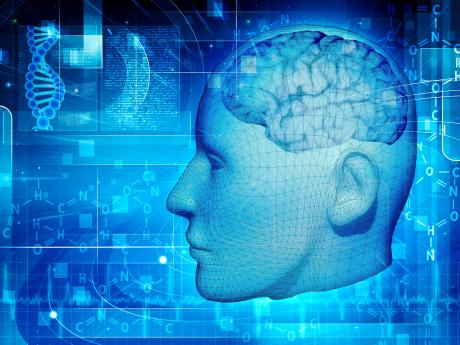Artificial Intelligence and the Economy | Utilising artificial intelligence could aid economic stimulation
Humans can do cognitive tasks, that is, humans can think. Humans can think to learn, think to teach, think to do disease diagnosis as doctors, think to translate language, etc.
When we think, electrical impulses bounce around in the brain to generate thought. These electrical impulses can be seen as a type of "software" running on our brains, the "hardware".
In a similar way, we give intelligence to computers/hardware, by running on those computers, brain-inspired software applications. An example of brain-inspired application is called an Artificial Neural Network. Artificial Neural Networks power a large majority of smart applications today, and they're better at doing individual cognitive tasks than humans, such as disease diagnosis, language translation, and they help to do things like detect planets, etc.
As artificial intelligence researchers replicate more and more brain function in the form of brain-inspired software/hardware applications, we approach a form of artificial intelligence called Artificial General Intelligence (AGI). Instead of being good at individual cognitive tasks or small groups of individual cognitive tasks as smart machines are today, AGI is a model that will be able to do the entire cognitive landscape of cognitive/thinking tasks - that is, AGI will be equal to human-level intelligence overall. These general learning models will likely help us to solve cancer, ageing etc. Google chief AI engineer, Ray Kurzweil (who predicted the emergence of the Internet before it came along) also predicts that AGI will likely arrive in 2029! Kurzweil had largely correctly predicted the emergence of future hardware/software applications, by graphing how price/performance of technology scales with time.
Nowadays, each large firm (Google, Microsoft ...) seeks to achieve AGI, hiring the smartest machine-learning researchers. These large firms (or otherwise expert machine-learning researchers) produce free-to-use machine learning APIs (or easy-to-use apps) to the public, such as TensorFlow, or MXNet. For now though, these large firms mostly build machine-learning models that can solve individual cognitive tasks or small task groups (aka thinking tasks like disease diagnosis or language translation).
... Solving real world problems with easy-to-use apps
In the past, to leverage powerful brain-based technologies, we'd need experts with PHDs in machine learning and several years of research, but nowadays, we can utilise easy-to-use app packages or APIs that allow us to quickly throw together useful real world applications, and solve real world problems.
Crucially, these brain-inspired software work similar to children's brains; for years we tell the child this is a cat or this is a dog, and after a few years of experience, the child can identify things without parents' guidance - without being told correct labels. (So the child experiences data in the form of images seen by the eye, and correctly labelled images in the form of guidance from parents) Similarly, brain-inspired software requires experience or correctly labelled data, after which they may learn to classify unlabelled things (give them labels) accurately after exposure to correctly labelled data.
So these learning models require data and computer power (hardware), and data sets and computer resources are available on platforms for free such as Kaggle.
In a similar way, Jamaican farmers could compose setups that alleviate sorting tasks. Many other applications exist, in health care, and reasonably any sector involving thinking, (which is all sectors) can be augmented by machine learning.
... Machine-learning institute to help address concerns over automation of jobs
Back in 2015 when I started to write basic artificial neural networks from scratch, I had then through observation of the words of many experts in the field, begun to appreciate what machine learning could do for the state, and also how we could begin to utilise machine learning models, without PHD level work, or expensive computers. UWI Mona (via its artificial intelligence lecturer), through my advice, had already begun to slowly introduce neural networks as options in the Artificial Intelligence coursework in 2016, which is excellent. Artificial Intelligence is the hottest sector today globally, with projected earnings of US$1.2 trillion. This heat spot is only being accelerated when countries' universities adopt strong machine learning courses, that is, the better the machine learning course, the better graduating students are able to relate to this hot field. This has resulted in economic stimulation globally, as AI products/start-ups emerge across a variety of problem spaces. Like UWI Mona, it would be optimal if other universities in the Caribbean begin to introduce or encourage the use of machine learning models as an aim to maintain relevance, and the capability to solve real-world problems in efficient machine-learning oriented ways.
Recent articles have pointed out artificial intelligence-related automation and its potential threat to jobs while others have pointed out when artificial intelligence-based machines will really roughly begin to consume Jamaican jobs.
Those articles above are great, but they don't, in sufficient detail, begin to describe practical ways of approaching this impending/already present automation. The Machine Learning Jamaica Institute (MLJI) is an early platform that already describes practical curriculums/ways to alleviate potential unemployment caused by the already present automation of jobs, and the inevitable future automation of more and more jobs.
With the advice/assistance of UWI Mona lecturers, I am working to construct the MLJI, which is concerned with equipping more Jamaicans with modern machine learning skills. The institute will serve to enable more Jamaicans to gain the ability to earn money in light of job automation, such as technologies that already replace humans in call centre jobs.
• Jordan Micah Bennett is an artificial intelligence researcher/programmer at Modern Archiving Solutions Ltd Jamaica, inventor of the Supersymmetric Artificial Neural Network, and author of 'Artificial Neural Network for Kids'. Jordan is also working hard, trying to build something called the MLJI, the first the first machine-learning institute in Jamaica



